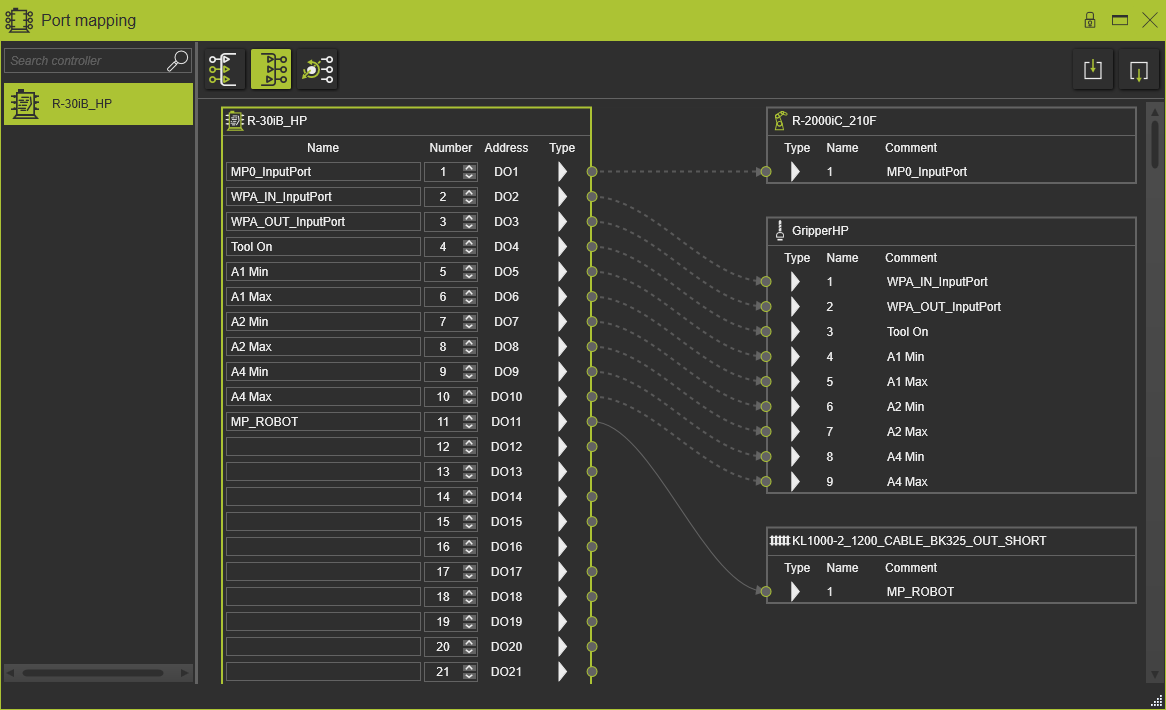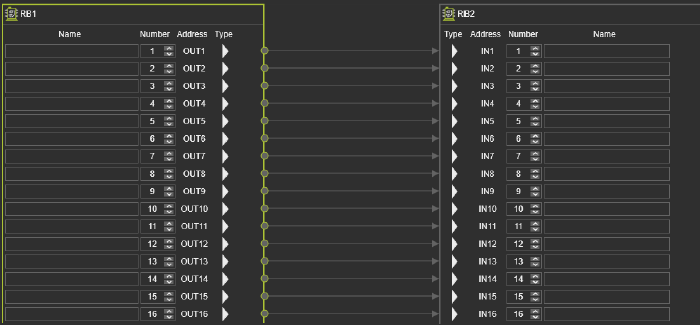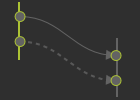|
 Signal port mapping Signal port mapping
|
 Ports Ports
|
 Port connections Port connections
|
 Port connection display Port connection display
|
|
 Signal port mapping Signal port mapping
|
|

|
|
|
 Ports Ports
|
|
A controller handles two different ports:
|
|
Joint
|
A joint port is the interface of the signal mapping for the external axes of a resource. It is only available on driven and synchronous axes, i.e. joints.
|
Logical
|
A logical port exchanges control command signals (sensor, motion trigger, handshake, ...) between controllers or between a controller and its periphery. Logical ports can only connect to other logical ports.
A controller has both logical in- and out-ports.
|
|
|
A port supports different data types:
|
|

|
Boolean
|
Default port type
|

|
8-bit Byte
|
|

|
32-bit Real / Float
|
|
|
|
|

|
16-bit Integer
|
|

|
32-bit Integer
|
|
|
|
|
 Port connections Port connections
|
|
Port connections can only be defined when an electrical connection exists between the components and when the ports of these components are of the same type.
|
|
The software supports in an automatic mapping of ports to establish the connections.
|
|
When connecting two controllers electrically, the software will automatically map the next free 16-boolean signals of both controllers. Already existing electrical connections between controllers will not change.
|
|

|
|
When electrically connecting a resource and a controller, the software will automatically map:
 Controller inputs and resource outputs Controller inputs and resource outputs
 Controller outputs and resource inputs. Controller outputs and resource inputs.
|
|
If the resource contains a port of a different type than a boolean, then this port will be automatically created on the controller side.
|
|

|
|
However, after changing the resource port interface there will no automatic update of the port connections.
|
|

|
|
|
 Port connection display Port connection display
|
|
The port connections has two different display states.
|
|

|
|
The solid connection has been created in the current active layout. It can be modified. The dashed connection has been created in another layout, that is not active yet. This connection cannot be modified here.
|
|